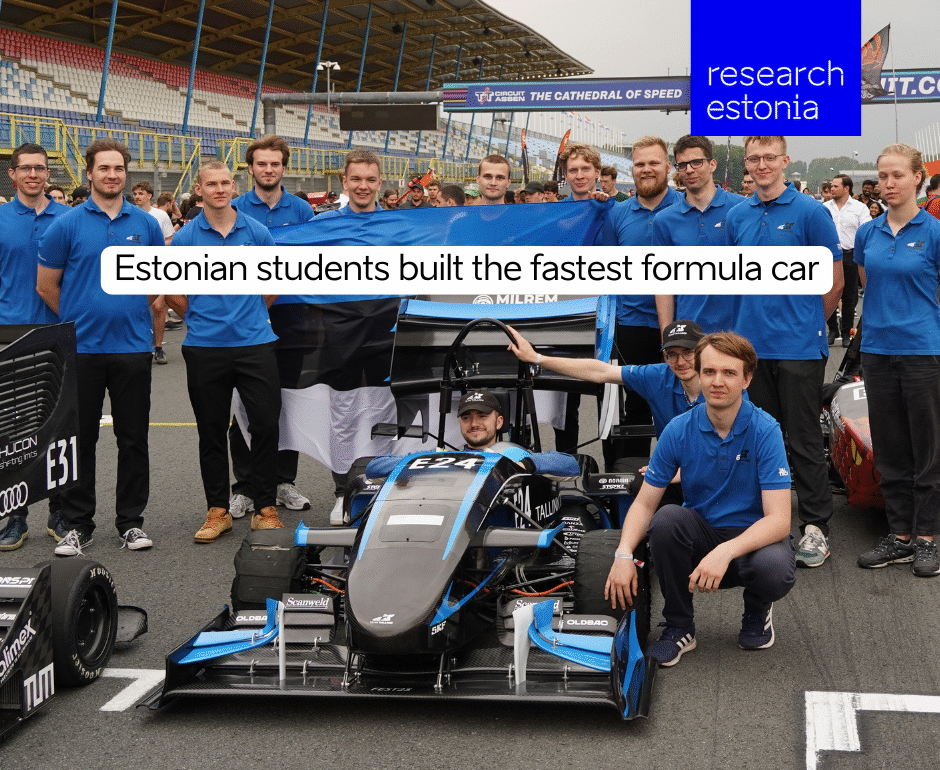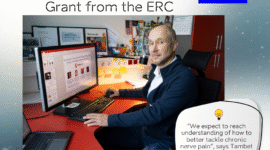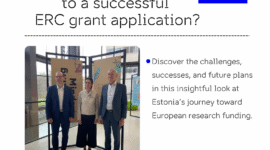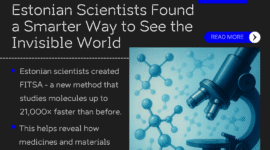Table of Contents
2024 was a year FS Team Tallinn will never forget. They became world champions in student formula racing. But to win, they had to build their car from scratch.
Estonia may not be the first country people associate with racing. But FS Team Tallinn didn’t come out of nowhere. Before Estonia regained independence in 1991, it was the only Formula car producer in the Soviet Union. “Student formula here builds on a long-standing tradition,” says Tauno Otto, development manager at Tallinn University of Technology’s (TalTech) Department of Mechanical and Industrial Engineering.
So, how did Estonia become a racing country? Otto believes it’s because Estonians have always been a bit obsessed with cars. “We love driving and motorsports, like rallycross,” he says.
In the garage day and night
One of the most exciting times for the FS Team Tallinn is spring. While most students juggle exams and late-night park hangouts, the racing team is buried in work.
“In spring, the whole team is in the garage day and night,” says team captain Harry Aus. They need to get the car ready to show to sponsors and take it to competitions. Even though spring is the peak period, building a formula car takes nine months. Everything from design to production and testing is done in Estonia.
The student formula team is one of many tech-focused student groups at Taltech, alongside Robotex and Solaride, uniting young engineers driven to build and solve.
FS Team Tallinn includes students from both TalTech and TTK University of Applied Sciences. They study everything from IT to economics and physics. And all those skills come in handy. For example, IT became essential when the team switched from combustion to electric engines. Economics students get to test what they’ve learned because every technical decision must also make financial sense.
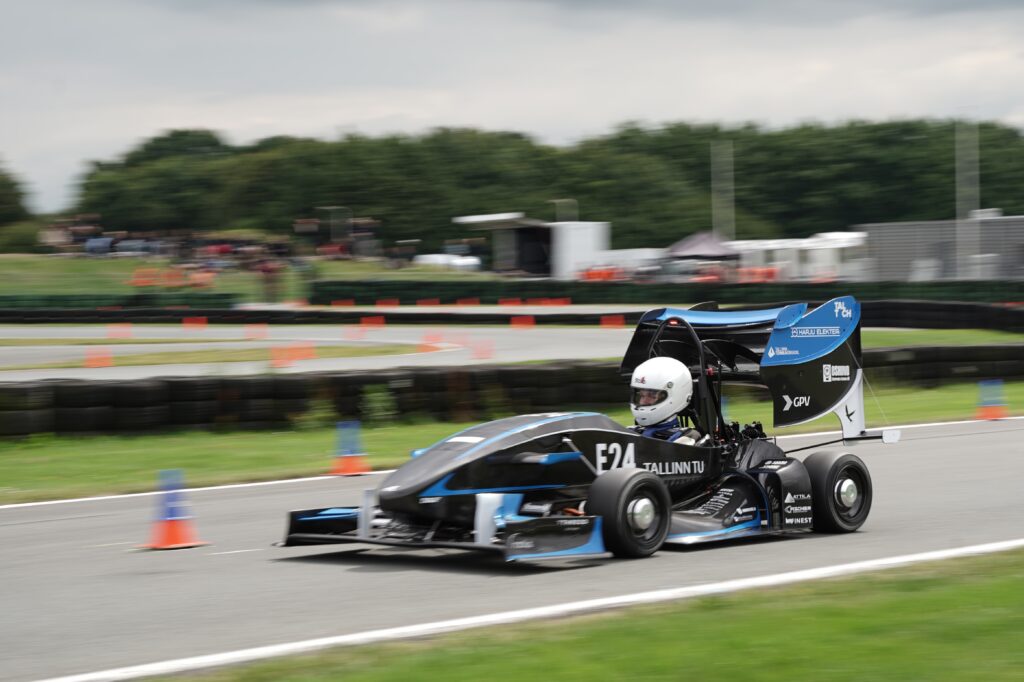
Aus, who studies business information technology, says the team is the perfect place to apply both his business and coding skills. When he joined, he developed the electric engine’s management system.
But being part of the FS Team Tallinn takes real commitment. Students are divided into sub-teams, each responsible for a part of the car.
Each year, the team either builds a brand-new model or upgrades last year’s car. Aus is pleased with how this year’s model turned out. “It’s completely different from last year’s,” he says. It features a new battery pack for better balance and is lighter. The whole car weighs just 170 kg.
Selecting the drivers
“There’s no room for fear,” says Otto, describing what it’s like to drive a formula car. The cockpit is tight. The driver wears a special seat and helmet. “The acceleration is insane. It’s just cool to be in a fast car,” he adds.
But not everyone gets to drive it in competition. “Selecting a driver is like selecting an astronaut. You need both quick thinking and the ability to act,” Otto says.
To choose drivers, FS Team Tallinn uses a Driver-in-the-Loop simulator, the same type used by Porsche engineers. “In the simulator, you can create a virtual car model with the same parameters as the real one,” explains Aus. That’s the first selection round. After that, candidates race with competition karts. The best among them gets to drive last year’s model.
Constant Scientific Improvement
When you imagine a group of university students building something, you can bet new ideas will come out. The team’s know-how has even attracted outside interest. “People already come to ask us about composites,” says Aus.
Their car’s body is a carbon-fibre monocoque, just like in F1. In Estonia, there’s no existing expertise in making monocoque bodies. The team even developed their land speed sensor, something that can otherwise only be bought in two or three places globally.
Student formula is a powerful launchpad. Some alumni have taken their passion to the supercar factory Koenigsegg in Sweden, where they build high-end, custom carbon-fibre cars. Others are closer to home at Milrem Robotics, a leader in combat robotics.
One of the team’s most well-known alumni is Kristjan Maruste, EY Entrepreneur of the Year 2023 and Co-Founder/CEO of Kõu Mobility Group, the company behind Tuul scooters. All of its brands support zero-emission city transport.
Estonia’s Rising Interest in Engineering
Fjodor Sergejev, Dean of TalTech’s School of Engineering, was amazed to see a 59% increase in applications for engineering programs compared to the previous year. He credits years of outreach, events, and the opening of an engineering academy two years ago.
That growth is badly needed. “There’s demand in every field: construction, energy, mechanics, industrial engineering,” Sergejev says. Technology is evolving fast, and Estonia faces a demographic crunch: in the past 15 years, more engineers have retired than graduated. Eesti Energia alone has lost 3,000 engineers over the past decade.
The interest in engineering seems unique to Estonia. “There’s strong interest across the Baltics, but Estonia is in a league of its own,” says Sergejev. He believes young people are drawn to the impact of technology. “Can you imagine life without phones, the internet, warm water, cars?” he asks. Young people see that it’s all created by engineers. “And they want to be part of it!”
One key to keeping interest high is supporting student organisations. TalTech now hosts about a dozen of them. The most successful? The student formula team. It took them 17 years to reach the top. But now that they’ve won the world championship, there’s no reason to stop!
This article is written by Marian Männi editor Anete Kruusmägi. This article was funded by the European Regional Development Fund through Estonian Research Council.
If this glimpse into engineering has you geared up, don’t lose momentum! Bolt over to our next article where you can read more about how A lab accident turned into a revolution in energy technology!
 Back
Back